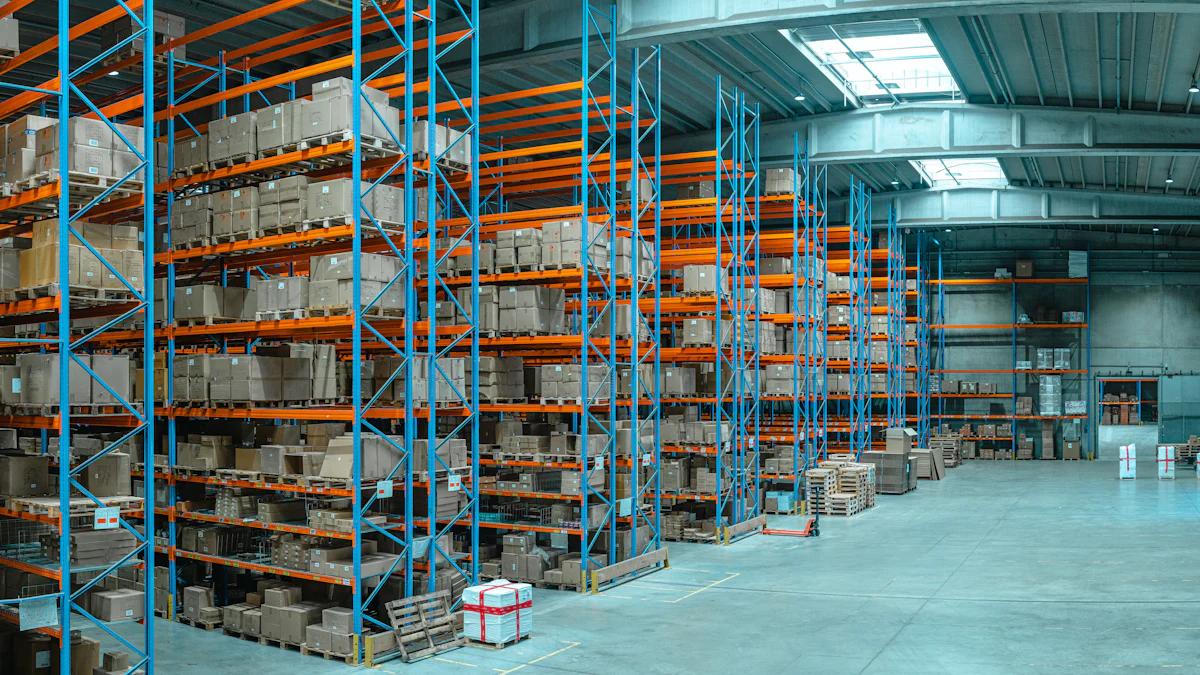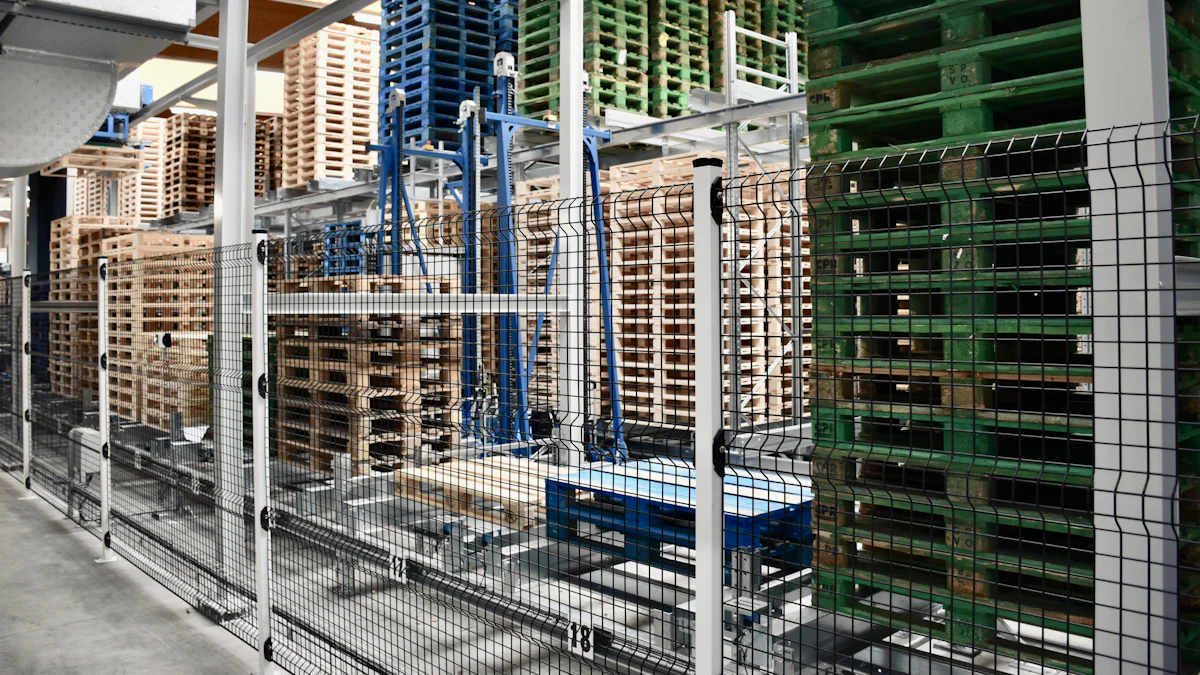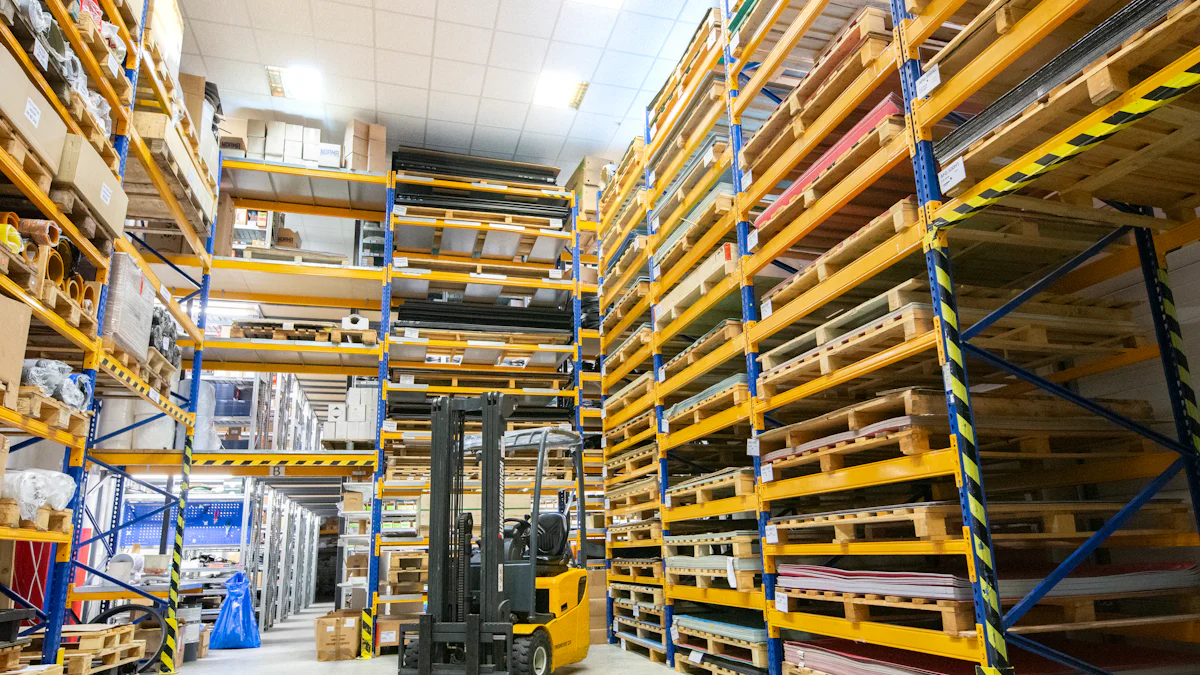How to Optimize Cold Chain Logistics for Food and Pharmaceutical Safety

Cold Chain Logistics plays a vital role in maintaining the safety of food and pharmaceuticals. Temperature-sensitive products require precise handling to prevent spoilage and ensure efficacy. Failures in this logistics sector can lead to significant financial losses. The biopharma industry alone loses approximately $35 billion annually due to inadequate temperature control. Challenges such as maintaining consistent temperatures and adhering to regulatory standards demand innovative solutions. Effective Cold Chain Logistics ensures product integrity, safeguarding public health and minimizing economic impact.
Understanding Cold Chain Logistics
Definition and Importance
Cold Chain Logistics refers to the transportation and storage of temperature-sensitive products. This system ensures that products remain within a specified temperature range from production to consumption. Key components of Cold Chain Logistics include refrigeration units, insulated containers, and temperature monitoring devices. These elements work together to maintain product quality and safety. Cold Chain Logistics plays a crucial role in global supply chains. Many industries rely on these systems to transport perishable goods across international borders. The pharmaceutical and food sectors particularly depend on Cold Chain Logistics for product integrity.
Industry Standards and Regulations
The industry adheres to strict standards and regulations to ensure safety and compliance. Food safety regulations mandate continuous temperature tracking. This practice prevents fluctuations that can spoil perishable goods. Regulatory bodies require meticulous documentation of temperature records. Proper record-keeping protects consumer health and brand reputation. The pharmaceutical industry faces stringent compliance requirements. The US Food and Drug Administration (FDA) and International Council for Harmonisation (ICH) set these standards. Compliance involves meticulous temperature monitoring and stress testing. These measures ensure that cold chain logistics do not pose life-threatening consequences to end users. Government agencies continue to tighten regulations on production and supply chain processes. New guidelines cover temperature-controlled transport of pharmaceutical products. These regulations enhance safety and traceability in the industry.
Challenges in Cold Chain Logistics

Temperature Control Issues
Common causes of temperature fluctuations
Cold Chain Logistics faces significant challenges in maintaining consistent temperatures. Equipment failures often lead to temperature fluctuations. Refrigeration units may malfunction, causing products to deviate from their required temperature range. Power outages also pose a risk, disrupting the cooling systems essential for Cold Chain Logistics. Human error during handling and transportation can contribute to temperature inconsistencies. Inadequate training of personnel results in improper storage or transit conditions. The use of traditional shipping methods without continuous monitoring increases the likelihood of temperature deviations.
Impact on product quality
Temperature fluctuations severely impact product quality in Cold Chain Logistics. Perishable goods, such as food and pharmaceuticals, lose their efficacy when exposed to incorrect temperatures. Vaccines become ineffective if not stored under precise conditions. Spoiled food products pose health risks to consumers and damage brand reputation. Continuous temperature tracking prevents these issues by ensuring products remain within specified ranges. Real-time data monitoring provides visibility into critical operational parameters. Prompt intervention based on accurate data preserves product integrity and safety.
Transportation and Storage
Infrastructure limitations
Infrastructure limitations present obstacles in Cold Chain Logistics. Many regions lack adequate facilities for temperature-controlled storage. Insufficient cold storage capacity leads to overcrowding and improper stacking of products. Transportation networks often fall short in providing reliable refrigerated transport options. Poor road conditions and limited access to remote areas hinder efficient Cold Chain Logistics. The absence of modern technology in older infrastructure results in inefficiencies. Automated systems offer increased accuracy and operational efficiencies compared to manual systems.
Risk management strategies
Risk management strategies play a crucial role in overcoming challenges in Cold Chain Logistics. Implementing advanced technologies enhances temperature control and monitoring. IoT devices enable real-time tracking of temperature and humidity levels. Automated alerts notify personnel of potential deviations, allowing for immediate corrective actions. Training programs improve personnel competency in handling temperature-sensitive products. Collaboration among stakeholders ensures seamless coordination across the supply chain. Utilizing both disposable packaging with temperature-testing technology and reusable containers enhances sustainability and product protection.
Methodologies for Optimization
Technology Integration in Cold Chain Logistics
IoT and real-time monitoring
IoT technology transforms Cold Chain Logistics by enhancing tracking and monitoring. Sensors and connectivity provide real-time data on temperature and humidity. This technology ensures precise control over environmental conditions. Real-time monitoring reduces spoilage and improves product quality. Rapid issue identification allows for immediate corrective actions. IoT infrastructure measures data every few minutes, ensuring continuous oversight. These advancements lead to higher customer satisfaction and regulatory compliance.
Automation in logistics
Automation plays a crucial role in optimizing Cold Chain Logistics. Automated systems streamline processes and reduce human error. Robotics and AI technologies enhance efficiency in storage and transportation. Automation ensures consistent temperature control throughout the supply chain. These technologies address risks swiftly, preserving product integrity. Automated alerts notify personnel of potential deviations, allowing for quick responses. The integration of automation leads to cost-effective and intelligent logistics operations.
Process Improvements
Streamlining supply chain processes
Streamlining processes enhances efficiency in Cold Chain Logistics. Simplified workflows reduce delays and improve coordination. Efficient resource utilization minimizes waste and lowers costs. Advanced planning tools optimize transportation routes and storage solutions. These improvements ensure timely delivery of temperature-sensitive products. Streamlined processes enhance overall supply chain performance. This approach leads to increased reliability and customer trust.
Enhancing collaboration among stakeholders
Collaboration among stakeholders is vital for successful Cold Chain Logistics. Effective communication ensures seamless coordination across the supply chain. Collaborative platforms enable real-time information sharing. Stakeholders can make informed decisions based on accurate data. Joint efforts enhance problem-solving and innovation. Collaboration fosters strong partnerships and mutual benefits. This approach strengthens the entire logistics network, ensuring safety and efficiency.
Solutions for Ensuring Safety
Best Practices in Cold Chain Management
Training and education for personnel
Cold Chain Logistics requires specialized knowledge and skills. Training programs equip personnel with the necessary expertise. Employees learn to handle temperature-sensitive products with precision. Proper training minimizes human error and enhances operational efficiency. Education on regulatory standards ensures compliance in Cold Chain Logistics. Personnel gain an understanding of industry-specific protocols. Continuous learning keeps employees updated on technological advancements. Training fosters a culture of safety and responsibility in Cold Chain Logistics.
Implementing robust quality control measures
Quality control measures play a vital role in Cold Chain Logistics. Consistent monitoring of temperature conditions ensures product integrity. Advanced technologies provide real-time data on environmental parameters. Quality control systems detect deviations promptly and initiate corrective actions. Regular audits verify adherence to industry standards. Documentation of temperature records maintains transparency and accountability. Robust quality control measures prevent spoilage and contamination. These practices safeguard consumer health and protect brand reputation.
Case Studies and Success Stories
Examples from the food industry
The food industry showcases successful Cold Chain Logistics implementations. A leading dairy company optimized its supply chain through IoT integration. Real-time monitoring reduced spoilage rates by 30%. The company achieved higher customer satisfaction and increased sales. Another example involves a seafood exporter utilizing advanced refrigeration units. The exporter maintained precise temperatures during transit. As a result, the company expanded its market reach and enhanced product quality. These examples highlight the impact of effective Cold Chain Logistics in the food sector.
Innovations in pharmaceutical logistics
Pharmaceutical logistics benefit from innovative Cold Chain Logistics solutions. A major vaccine manufacturer implemented automated systems for temperature control. Automation ensured consistent conditions throughout the supply chain. The manufacturer improved compliance with regulatory standards. Another success story involves a biotech firm using blockchain technology. Blockchain provided traceability and transparency in pharmaceutical logistics. The firm reduced risks of counterfeit products and enhanced patient safety. These innovations demonstrate the transformative potential of Cold Chain Logistics in pharmaceuticals.
JUSDA's Role in Cold Chain Logistics
Advanced Technologies and Platforms
JusLink for real-time collaboration
JUSDA employs JusLink, a platform that enhances real-time collaboration in Cold Chain Logistics. This tool integrates suppliers, manufacturers, and customers into a seamless network. JusLink provides accurate data, enabling precise decision-making. Real-time updates ensure that all parties remain informed about temperature conditions. This transparency minimizes risks and enhances efficiency in logistics operations.
Cloud platforms for efficient management
JUSDA utilizes cloud platforms to streamline Cold Chain Logistics management. These platforms offer centralized control over logistics processes. Cloud technology enables real-time monitoring of temperature-sensitive shipments. Data analytics provide insights into operational efficiencies and areas for improvement. Cloud-based systems enhance scalability and flexibility, adapting to varying customer demands.
Global Reach and Strategic Partnerships
Extensive service points and routes
JUSDA boasts a vast network of service points and routes worldwide. Over 155 service points support Cold Chain Logistics across the globe. This extensive reach ensures timely delivery of temperature-sensitive products. JUSDA's infrastructure includes more than 2,000 international service routes. These routes facilitate efficient transportation, maintaining product integrity throughout the supply chain.
Collaborations with key industry players
JUSDA collaborates with leading industry players to strengthen Cold Chain Logistics. Partnerships with over 3,000 component manufacturers enhance resource utilization. Collaborative efforts ensure compliance with regulatory standards and best practices. These alliances foster innovation and improve logistics solutions. JUSDA's strategic partnerships contribute to its leadership in global supply chain management.
Future Trends in Cold Chain Logistics

Emerging Technologies
Blockchain for traceability
Blockchain technology transforms Cold Chain Logistics by enhancing traceability. This innovation ensures integrity and transparency throughout the supply chain. Each transaction records securely, providing a tamper-proof history of product movement. Blockchain enables stakeholders to verify the origin and handling of temperature-sensitive goods. This approach reduces risks of contamination and counterfeiting in Cold Chain Logistics. Enhanced traceability fosters trust among consumers and partners.
Advanced analytics for predictive maintenance
Advanced analytics revolutionizes Cold Chain Logistics through predictive maintenance. Data-driven insights forecast equipment failures before they occur. Predictive models analyze patterns and trends in temperature control systems. This proactive approach minimizes downtime and maintains product quality. Companies optimize operations by reducing unexpected disruptions in Cold Chain Logistics. Analytics also assists in refining transportation routes and managing costs effectively.
Sustainability Initiatives
Reducing carbon footprint
Cold Chain Logistics embraces sustainability by reducing carbon footprints. Energy-efficient refrigeration units lower emissions during transportation and storage. Companies adopt renewable energy sources to power logistics operations. Sustainable practices align with global efforts to combat climate change. Reducing environmental impact enhances brand reputation and customer loyalty. Cold Chain Logistics companies lead the way in eco-friendly innovations.
Eco-friendly packaging solutions
Eco-friendly packaging solutions play a crucial role in Cold Chain Logistics. Biodegradable materials replace traditional packaging, minimizing waste. Innovative designs maintain temperature control while reducing environmental impact. Packaging solutions ensure product safety without compromising sustainability. Companies invest in research to develop advanced materials for Cold Chain Logistics. These efforts contribute to a greener and more responsible supply chain.
Optimizing cold chain logistics involves several key strategies. Continuous temperature tracking enhances product quality and safety by preventing spoilage. Maintaining recommended temperatures reduces degradation and contamination risks, minimizing losses. Real-time data alerts enable rapid issue identification and corrective actions, safeguarding against significant losses. Cold chain logistics service providers must integrate reliable connectivity and real-time tracking for efficiency. Continuous improvement requires identifying anomalies and root causes of temperature excursions. Industry stakeholders should commit to these practices to ensure regulatory compliance and protect public health.
See Also
Unveiling 5 Cutting-Edge Strategies for Supply Chain Optimization
Cost Efficiency in Supply Chain Economics
Ensuring Success: Top Methods for Supply Chain Optimization
Tomorrow's Logistics Revolution: AI in the Supply Chain
Unlocking Efficiency: Insider Tips for Logistics Savings in Supply Chain
